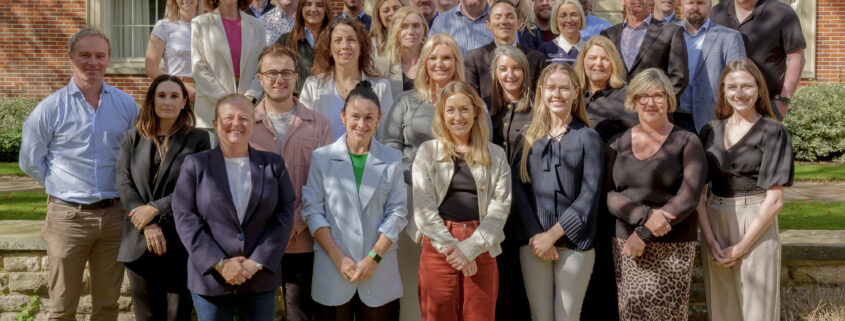As 2024 comes to a close, we want to take this moment to thank all of our partners, colleagues, and members who make the work of CDP possible. We are truly grateful for your continued support!
In this article, we want to share some of our highlights from 2024. Enjoy!
The CDP team
Fellowship Programme
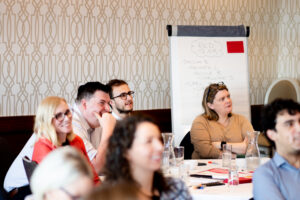
Fellows attend Climate and Sustainability session.
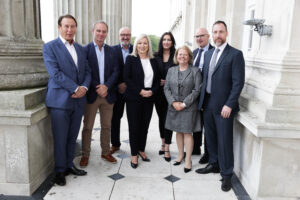
Fellowship partners with CEO Eva Grosman and First and deputy First Minister.
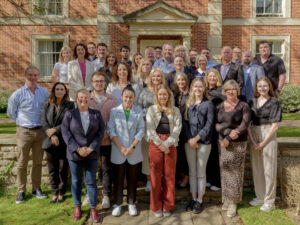
Fellows attend the Oxford residential in 2024.

The Class of 2024 pose for a photo at graduation in Hillsborough Castle.
In 2024, the Fellowship Programme continued to thrive, highlighted by our exceptional Fellows and notable residentials in Dublin and Oxford.
In April, we proudly celebrated the graduation of the Class of 2024 at Hillsborough Castle. Following a well-deserved break, we began the 2024/25 application process, receiving a record number of applications. In September, we launched the Class of 2025 at Stormont alongside the First Minister and deputy First Minister.
Overall, this year’s two cohorts engaged with topics led by world-class experts, including entrepreneurial leadership, systems thinking, climate and sustainability, and policy and governance. They also cultivated cross-sectoral relationships, essential for ensuring Northern Ireland’s prosperous future.
The success of the Fellowship Programme would not be possible without the generous support of our sponsors and partners: the Department for Foreign Affairs, Irish American Partnership, Allstate NI, Camlin Group, FinTrU, Fujitsu NI, NIE Networks, and Ulster Carpets.
We are looking forward to what is in store for the 2024/25 cohort and the wider alumni network in 2025!
To discover more about the Fellowship, visit our website.
TEDxStormont 2024

TEDxStormont speaker in the Great Hall, Stormont.

THE CDP and Brown O’Connor team.
On 20 January, TEDxStormont returned to the Great Hall in Parliament Buildings. The day was a roaring success with many thought-provoking and inspiring talks on this year’s theme of Restore.
A jam-packed audience of over 175 people were treated to a diverse range of talks from experts in their field as well as musical performances. Video recordings of the talks are now available on YouTube.
To read more about the day, click here.
John Smith Trust Fellows

JST Fellows meet with Foreign Secretary Lord Cameron.
In March, the CDP team were honoured to work with the John Smith Trust’s Belarusian Fellows to facilitate a trip to London and Oxford.
Read more here.
Cultural diplomacy in 2024

Delegates visit the Take a Breath exhibition at IMMA.

Speakers Q&A at the ‘Cultural Diplomacy and the Art of Soft Power’ seminar in Belfast.
In March, as part of Imagine! Belfast, CDP proudly hosted the seminar, Cultural Diplomacy and the Art of Soft Power, on March 21st at the Black Box. Click here to learn more.
We teamed up with the Irish Museum of Modern Art (IMMA) in June to explore the theme of breathing space. Building upon IMMA’s new exhibition Take a Breath as a foundation, alongside focusing on aspects of IMMA’s Collections and Archives, attendees explored the event’s theme as well as engaging in dialogue and the sharing of practice and ideas. We are truly thankful for the support of the Shared Island Civic Society Fund and we are excited to continue our relationship with IMMA.
CRIC 2024
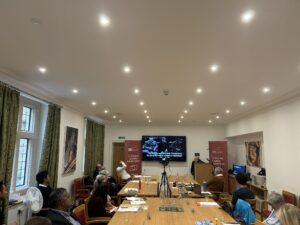
CEO Eva Grosman presents at CRIC 2024.
After the Fellowship’s Oxford residential, we were delighted to help our chairman emeritus Lord Alderdice organise this year’s CRIC conference.
CEO Eva Grosman gave a sobering yet powerful presentation on ending wars in light of what the late Polish philosopher Zygmunt Bauman described as liquid times: living in an age of uncertainty.
Congratulations to Lord Alderdice for organising another year of CRIC, a vital gathering for honest discussion and engagement.
Climate Democracy seminar

Speakers at the Climate Democracy seminar.
In October, CDP were delighted to host the Agriculture, Land Use, and Climate Democracy seminar at The MAC, Belfast. The day was filled with thought-provoking discussions on the future of climate action and policy innovation.
A special thanks to all our speakers for sharing their expertise and experience. We look forward to building on these conversations to see constructive action on issues that affect us all.
Teaching in Rome

Lord Alderdice, Eva Grosman (CEO), and Zachary Hutchinson (Programme Manager) at the Pontifical University of St. Thomas Aquinas.
We were honoured to be at the Pontifical University of St. Thomas Aquinas – Angelicum in late October with Lord Alderdice to facilitate a discussion with students from the St John Paul II Institute of Culture on the role of religion and identity in conflict and peace, with special focus on Northern Ireland.
Thank you to the Institute for inviting us!
Thank you!
Once again, thank you to all of our partners, colleagues, and members for your support in 2024. See you in 2025!




